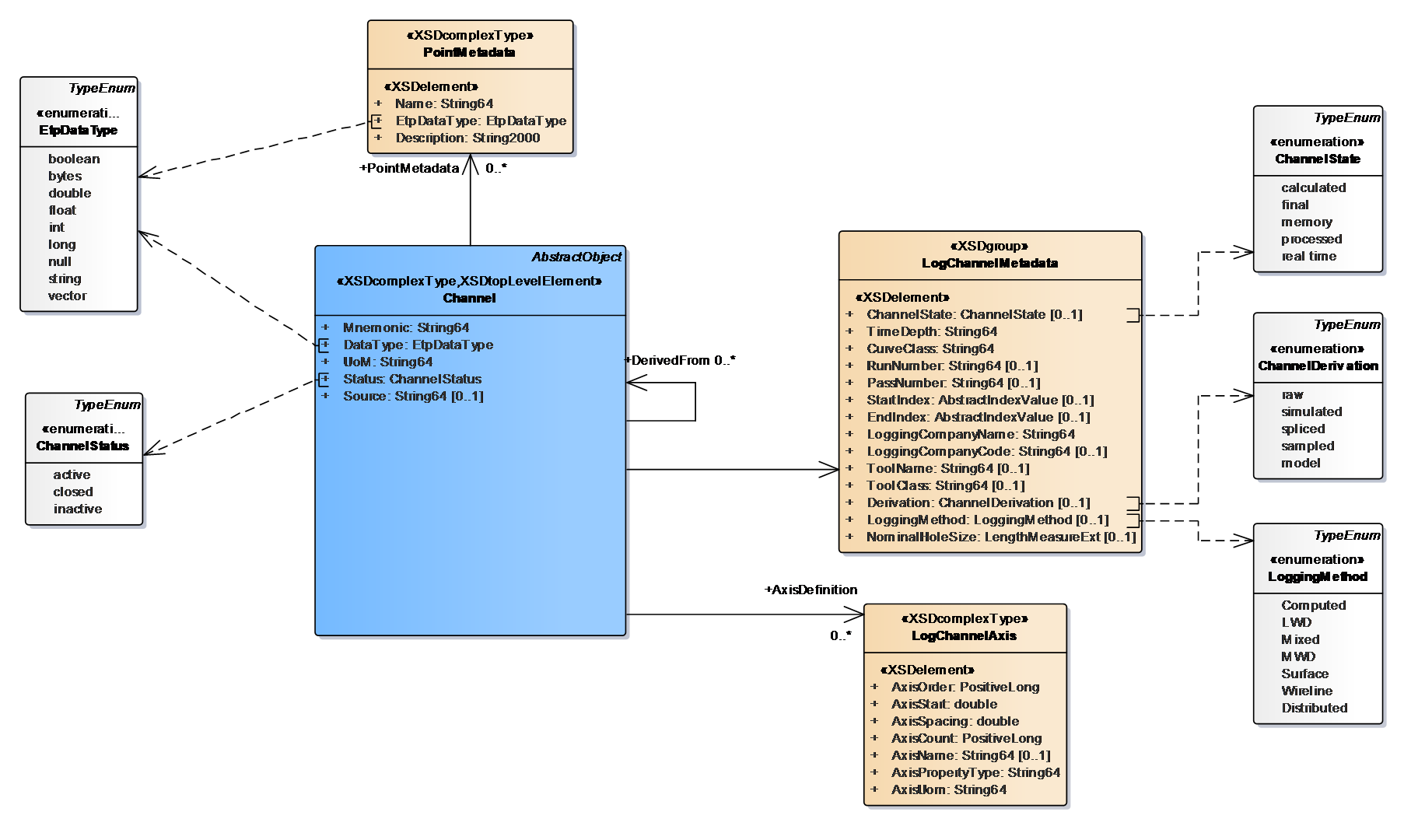5.3.1 Channel
| Topic Version | 1 | Published | 11/11/2016 | |
| For Standard | WITSML v2.0 | |||
The single biggest change occurring in WITSML 2 is the introduction of Channel as a top-level object in the store (Figure 5.3.1-1). A Channel is the measurement of one physical property versus a range of some other dimension, usually time, depth or both. Within a Channel, individual measurements are called data points. Each data point is a 2-tuple of an index value(s) and a data value.
In WITSML 1.x versions, the concept now called Channel existed only as child element (called a LogCurve) of a Log object. The uid of curves was not unique except within the context of the Log. With WITSML 2, a Channel has its own schema and exists in the store independent of any Logs that reference it. This means that a Channel can exist but not be in any Logs, and that a given Channel can appear in multiple Logs.
Like all top-level objects, Channel inherits from AbstractObject and thus shares the common Citation metadata elements of all Energistics data objects (e.g., guid, title, creation date, etc.).
Channels in WITSML also have a required relationship to a Wellbore.
As a consequence of being top-level, there is no longer the concept of a shared index between multiple channels, at the acquisition and storage level. Each channel is responsible for storing its own data as a set of indexed values. The notion of data alignment does not exist at the channel level (though it can show up in the Log object as discussed below). Of course, individual tools may or may not collect data on an index-aligned basis, and any given store may or may not chose to optimize its channel data storage based on common index values, but this is entirely implementation dependent and not part of this spec.
